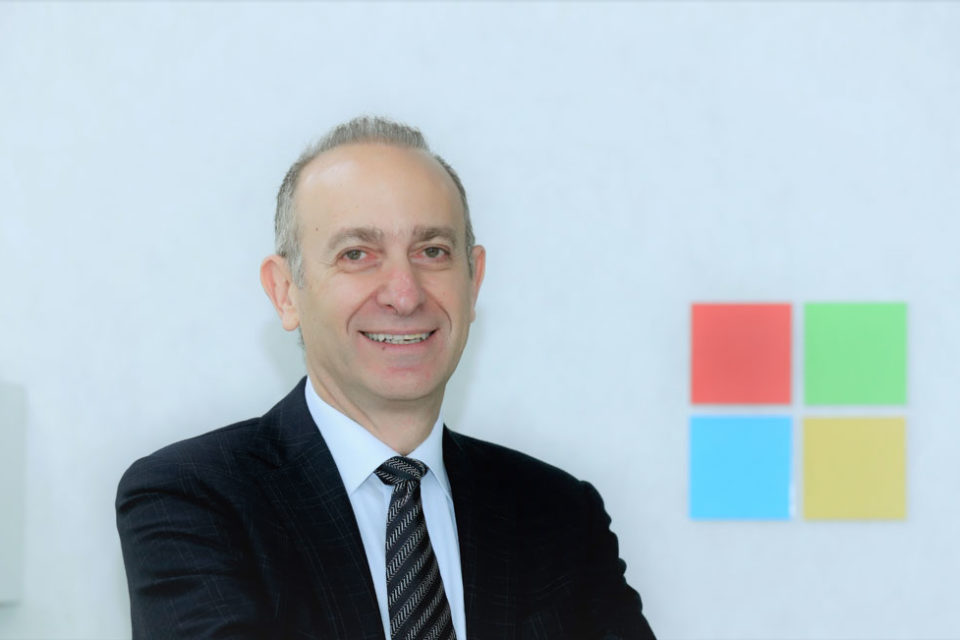By Charles Nahas, General Manager, Middle East Cluster, Microsoft
Incorporating more technology in the classroom will help facilitate future employment in Egypt
Tomorrow’s leaders are sitting in today’s classrooms. But will they be ready to lead in a digital world?
There can be little doubt, the digital age brings a wealth of opportunity for growth. In Egypt, digital transformation could generate a USD21 billion increase in GDP by 2025, as well as 945, 000 full-time equivalent jobs across the broader Middle East North Africa (MENA) region.
But, to take advantage of these future opportunities, young Egyptians need to start being equipped today with the skills that will be required by tomorrow’s workplace. In fact, with current advances in technology, by 2030 up to 375 million people will need to switch from the work they are doing right now.
This means it’s more critical than ever for students across the country to be equipped with both traditional numeracy and literacy capability, as well as STEM and computer science skills. According to a British Council report released earlier this year, STEM (Science, Technology, Engineering and Mathematics) skills will underpin future success and competitiveness – regardless of industry – because future jobs will require flexible and self-motivated individuals rather than just technical skills.
But, education relies on digital transformation to impact and change the way in which students learn. Students today need to be well-versed in technology and able to use it to the best of their advantage.
Here are four benefits of incorporating technology into the classroom:
- Personalised learning
Teachers today are using Blended Learning and Adaptive Learning techniques to create inclusive classroom environments and design learning that supports the needs of all students. In doing so, they are personalising lessons, and combining technology with face-to-face interactions.
Microsoft tools like Office 365 and Teams allow students to engage in seminars and small-group discussions, shifting more traditional classroom learning to real-life experiences and opportunities.
- Gamification
Gaming is a popular way for teachers to encourage student engagement while being used as an effective way of teaching computer science in schools. For example, Microsoft MakeCode brings computer science to life for all students with fun projects, immediate results, and both block and text editors for learners at different levels.
The real value in learning computer science and playing games like MakeCode is not in the act of coding itself but in building students’ ability to be creative, resilient and collaborative, skills they will need to succeed in the modern workforce.
Helping more students learn computer science is crucial to filling the jobs of tomorrow.
On a global level, annual events like Hour of Code provide opportunities for youth to experience coding for the first time using Minecraft Hour of Code or MakeCode tutorials.
This year, Microsoft has once again partnered with Code.org to offer a new Minecraft Hour of Code tutorial during Computer Science Education Week called, Voyage Aquatic, which helps students learn to code in a fun and interactive way. For communities with little access to the internet, these Hour of Code tutorials are available to download and install for offline use.
- Artificial intelligence (AI) for accessibility
The AI revolution has begun in the Middle East and Africa, and it’s going to empower and enable schools and teachers to do more than ever before. Applications contained in Office 365, for example, are utilising the power of Microsoft’s intelligent cloud while drawing on AI to help teachers improve learning outcomes.
- Mixed Reality
Mixed Reality, which is the combination of Augmented Reality and Virtual Reality, enables students to experience curriculums in completely new ways, and to immerse themselves in learning in a way that brings the content closer than ever before.
For example, HoloTour, which is included in the Windows Mixed Reality stack, allows learners to explore the history of Rome or uncover the hidden secrets of Machu Picchu. Similarly, Masterpiece VR offers learners the chance to sculpt and paint using intuitive and dynamic features.
Technology is set to be an ever-growing part of the future. Equipping students with richly featured technology and providing teachers with proven digital platforms and access to adaptive assessment tools gives schools the opportunity to ensure every child reaches their full potential.
With its efforts to reinvent the future of education, Microsoft has launched several initiatives in Egypt since 2012, Microsoft has empowered over 670,000 youth with technology skills and developed 500 centers across 27 different governorates of the country. This has helped create employment opportunities for 1.4 million young people. Last year, the initiative led to create more than 12,000 job opportunities for young people and trained over 122,000 individuals
Through its partnership with the Ministry of Higher Education and the Ministry of Education over the years, Microsoft Egypt has developed the capacity of more than 250,000 teachers to enable them to use technology in the classrooms and redefine learning.
Every teacher can teach computer science and incorporate technology into classrooms. To find out how you can build teacher capacity to support equitable computer science education download Microsoft’s ‘Computer Science Professional Development Guide’ here.




